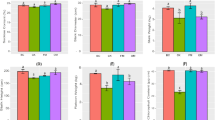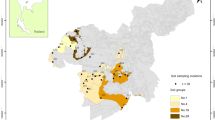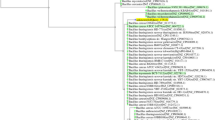Abstract
IN India, rice is grown on the same land for many years without the addition of manures to the soil. Preliminary experiments have shown that a considerable amount of nitrogen is fixed in the soils of the rice-fields under water-logged conditions, when there is an abundance of algal growth (especially Blue-green Algæ) present. With the object of investigating the role of the Blue-green Algæ, a number of species of Anabœna, as well as Phormidium foveolarum, were isolated in unialgal culture from the soil of an Indian rice-field. The last, as well as three species of Anabœna, were afterwards obtained in pure culture, altogether devoid of bacteria and other contaminating organisms, by a method analogous to that employed by Pringsheim (1913). These cultures have been tested by the Bacteriological Department at the Rothamsted Experimental Station and pronounced free from bacteria.
This is a preview of subscription content, access via your institution
Access options
Subscribe to this journal
Receive 51 print issues and online access
$199.00 per year
only $3.90 per issue
Buy this article
- Purchase on SpringerLink
- Instant access to full article PDF
Prices may be subject to local taxes which are calculated during checkout
Similar content being viewed by others
Author information
Authors and Affiliations
Rights and permissions
About this article
Cite this article
FRITSCH, F., DE, P. Nitrogen Fixation by Blue-Green Algæ. Nature 142, 878 (1938). https://doi.org/10.1038/142878a0
Published:
Issue date:
DOI: https://doi.org/10.1038/142878a0
This article is cited by
-
Phosphorhaushalt und planktische Primärproduktion im Vierwaldstättersee (Horwer Bucht)
Schweizerische Zeitschrift für Hydrologie (1968)
-
Algae in relation to soil fertility
The Botanical Review (1964)
-
A guide to the literature on ecology and life histories of the algae
The Botanical Review (1956)
-
Some notes on the algal ecology of a Michigan Lake
Hydrobiologia (1949)
-
Nitrogen Fixation in the Rice-Field Soils of Bengal
Nature (1940)



